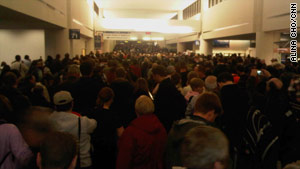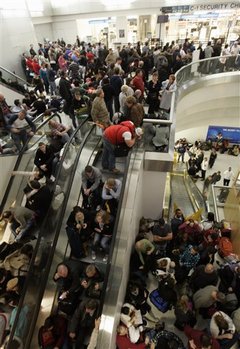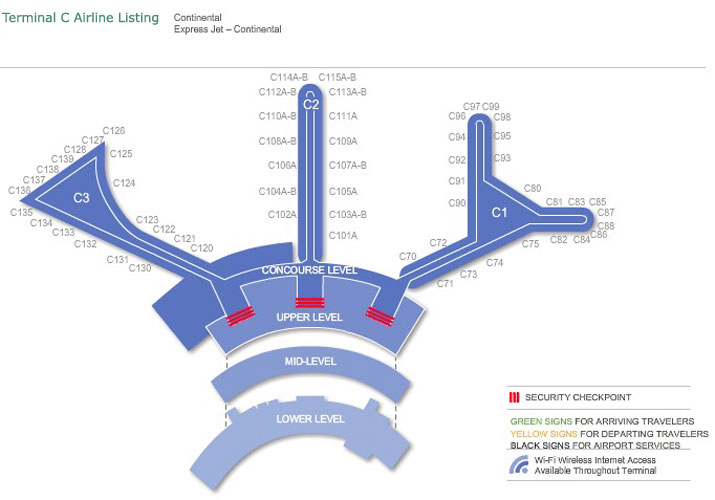The Washington Post reports that German police evacuated a Munich terminal because a guy’s PC set off a bomb detector. At least in this case, there was at least some indication of a threat, but as we’ve seen no bomb actually went off. While some people might believe it is better to be safe than sorry, again the risk is whether we should be sorry or sorrier.
Category: Humanity
Can America use Israel’s Security model?
So now I’ve ranted about just how awful the TSA is. A friend says that we should throw them away and start doing airport security the way the Israelis do it. CNN recently carried an interview with Isaac Yeffet, the former chief of security for El Al. In the interview, Mr. Yeffet points out any number of failures, and he is particularly damning when it comes to Richard Reid, the Shoe Bomber, because our security system missed many warning signs that Mr. Reid wasn’t planning to come home, and he wasn’t planning to stay in America. In those circumstances, either you’re having a very short visit, or you don’t plan on landing. He goes on to point out how making people take off their shoes is “a patch on top of a patch.” He’s 100% right. Mr. Yeffet goes on to describe his view of strong security, the key message simply being: you have to have smart and observant people scrutinizing travelers. Of course this model could work in America, but would we get the exact same results?
Possibly, but the length of the interviews will vary. For one, while Mr. Yeffet claims that they can easily determine a “bona fide” in a few minutes, the truth is that there is a clearer profile of what such a person is in Israel. Israel is a small country. They don’t need to profile Arabs or other muslims or anyone else, because they have profiled the small number of types of legitimate travelers. America is far more diverse, and hence far more difficult to determine who is a legitimate traveler.
As an example, the last time I traveled on El Al, I was asked point blank why I was going to Israel, and if I am Jewish. I was going on business, I am Jewish, and I could name my temple. I think I produced a business card. That was the end of my interview. I can also say it wasn’t so easy for others who spent quite a bit more time being interviewed.
What do you think?
And so in answer to my friend, yes. I agree with should disband the TSA and start again, with properly trained professionals who are able to better manage threats. But I do not believe that simply applying Israel’s approach will yield perfect results. The law of numbers is playing against us.
It happened again! TSA Risks lives at JFK!
 If there’s one thing that I can’t stand, it’s people who don’t learn from their mistakes, and here once again, the TSA has failed to learn. Once again they evacuated a terminal, took many people and crammed them into small spaces, and created a huge target for a bomber, this time in Terminal 8 of JFK. This time the incident occurred because someone went through a door he shouldn’t have gone through.
If there’s one thing that I can’t stand, it’s people who don’t learn from their mistakes, and here once again, the TSA has failed to learn. Once again they evacuated a terminal, took many people and crammed them into small spaces, and created a huge target for a bomber, this time in Terminal 8 of JFK. This time the incident occurred because someone went through a door he shouldn’t have gone through.
Our Nightmare at Newark: TSA was a threat to our security
 As you may already know, Newark Airport was in chaos on January 3rd due to a person walking through the exit of the so-called strerile area. The incident occurred around 5:20pm, around the time that we were sitting down for a dinner snack inside. Good thing. We were not to eat on the plane, which was scheduled to leave at 6:50pm. We boarded the plane, the door was closed but we didn’t go anywhere. After a time we were told of the breach. I packed our stuff up. Anyone who read the accidentally released TSA manual as I did would have known that this would happen once we learned that someone had gotten through. Sure enough that’s exactly what happened, which led to the scene depicted to the right, because everyone else was doing exactly the same thing.
As you may already know, Newark Airport was in chaos on January 3rd due to a person walking through the exit of the so-called strerile area. The incident occurred around 5:20pm, around the time that we were sitting down for a dinner snack inside. Good thing. We were not to eat on the plane, which was scheduled to leave at 6:50pm. We boarded the plane, the door was closed but we didn’t go anywhere. After a time we were told of the breach. I packed our stuff up. Anyone who read the accidentally released TSA manual as I did would have known that this would happen once we learned that someone had gotten through. Sure enough that’s exactly what happened, which led to the scene depicted to the right, because everyone else was doing exactly the same thing.
This led to thousands of people being crammed into the outside normally insecure areas of Terminal C (I say “normally”) because all passenger areas within the terminal were at this moment insecure), an event for which the airport is unprepared. For one, there aren’t so many bathrooms outside of security. At Terminal C there are no restaurants. Furthermore, it was difficult to move about. Smart and lucky people might have made their way to the AirTrain and perhaps have gotten to Terminal A, where such conveniences could be found.
 There were a lot of mistakes made, and many of them have been acknowledged. However, the biggest one has not. By evacuating the terminal in the way that they did, the TSA actually created a huge risk to many thousands of people by concentrating them in a small area. Had a small group of bombers walked into that area, with backpacks, not only could they have killed many people, but they also could have done so and survived. It would be the height of irony if the only portion of that terminal left intact was the secure part, while thousands were injured or worse.
There were a lot of mistakes made, and many of them have been acknowledged. However, the biggest one has not. By evacuating the terminal in the way that they did, the TSA actually created a huge risk to many thousands of people by concentrating them in a small area. Had a small group of bombers walked into that area, with backpacks, not only could they have killed many people, but they also could have done so and survived. It would be the height of irony if the only portion of that terminal left intact was the secure part, while thousands were injured or worse.
They might even have been able to get away unscathed. Instead of avoiding the threat, the TSA magnified it by their actions. Doing nothing would have been less risky.
“But,” you say, “they had to reclear everyone, didn’t they?” My answer would be that it’s a seemingly nice idea, but it may not be practical. Here are some things the TSA could have done differently:
- Use teams of people to clear people at their flights by their gates. This is human intensive and not particularly easy, but it would have at least kept people from having to leave the secured area, and thus contributing to the risk. The interesting thing is that the TSA had a whole lot of staff doing a whole lot of nothing while the passengers were exiting the sterile area. And so they could have implemented this measure in some limited way for flights that were ready to go, where all passengers are accounted for.
- Work with the airline to cancel flights. Nobody thought to do this because apparently they didn’t understand the threat. In fact, Continental representatives contributed to the risk by encouraging people to wait and not rebook (more on this some other time). Continental needed to position a lot of planes anyway in order to avoid utter chaos in the coming days.
- Use other terminals and/or buses. That is, get people to areas that haven’t been compromised, and then move them to planes. This requires a fair amount of coordination with both the airline and the port authority. Those buses may not even exist at Newark.
But ultimately, there is no perfect answer to the question because each of these solutions costs money, and that requires that someone measure risk. The risk of letting one person through is at most one plane of several hundred people. This is so because the cockpit doors are reinforced. A terrorist might be able to get an explosive on board, but it would be unlikely that he could use it to direct a plane into a population center, which is what Newark Airport Terminal C’s outer areas became. And there is the risk equation.

Now you may say that I contributed to the risk by not leaving the area. True, I did. Indefensible. My wife and daughter should be quite upset with me, especially since I work in the business. Now it’s time for the TSA to own up. Oh, and it’s not just some local TSA guy who they can hoist this one on. Once security was breached, the local teams followed procedures in the manual.
Credit Card Protections and Privacy Eroded Yet Again in the USA
 When we got married, we ordered our invitations over the Internet from a company that seemed fairly reputable. Apparently, however, their ordering process was screwed up because we didn’t get the invitations until 6 weeks prior to the wedding. No big deal to some, perhaps, except that almost nobody was going to be local to the wedding location, and many people were going to have to book airline reservations. I asked the credit card company to stop payment to the vendor because of the late delivery.
When we got married, we ordered our invitations over the Internet from a company that seemed fairly reputable. Apparently, however, their ordering process was screwed up because we didn’t get the invitations until 6 weeks prior to the wedding. No big deal to some, perhaps, except that almost nobody was going to be local to the wedding location, and many people were going to have to book airline reservations. I asked the credit card company to stop payment to the vendor because of the late delivery.
Yesterday’s Wall Street Journal reports on a new service that vendors can use to spot consumers who stop payment through their credit cards. Sometimes consumers will stop payment when they have received products in time, and used them. This is particularly common this time of year, when lots of vendors sell lots of crap about which they know nothing. The consumer gets pissed off because they’ve just bought a no-good product, and the vendor gets pissed off, because they have to spend time fighting the consumer instead of selling.
The new service blocks consumers’ credit cards due to this so-called friendly fraud. In most cases, the consumer will likely have no idea why their card is being turned down, and will simply pay with cash (a vendor who accepts a different card from such a consumer would be stupid).
Is this the way things should be? Vendors are reporting credit card information to third parties without the consent of the consumer, and then that third party turns around and makes a profit on that information. The consumer is the loser for having availed himself or herself of her rights under the credit card agreement. What’s more, what is to stop a bad vendor from reporting a good customer? Who will have the last laugh?
Now some will say that a good customer can always fight, and the article does say that these new services often offer avenues of appeal. And I bet it will work not quite as well as credit agencies handle it. At least in those circumstances, there are laws.